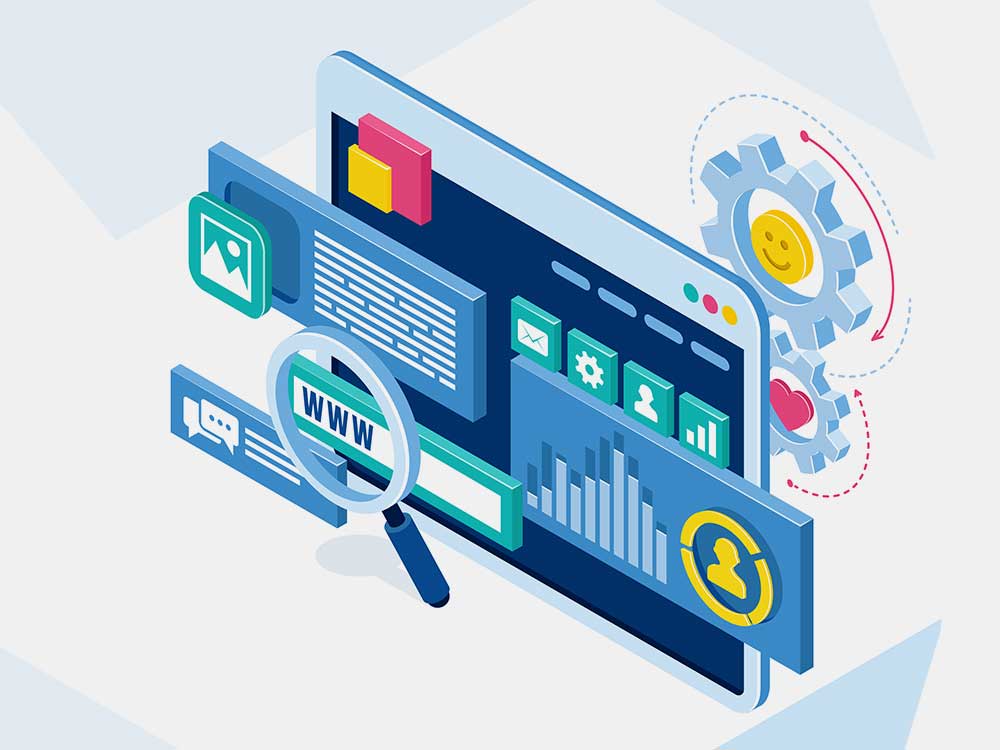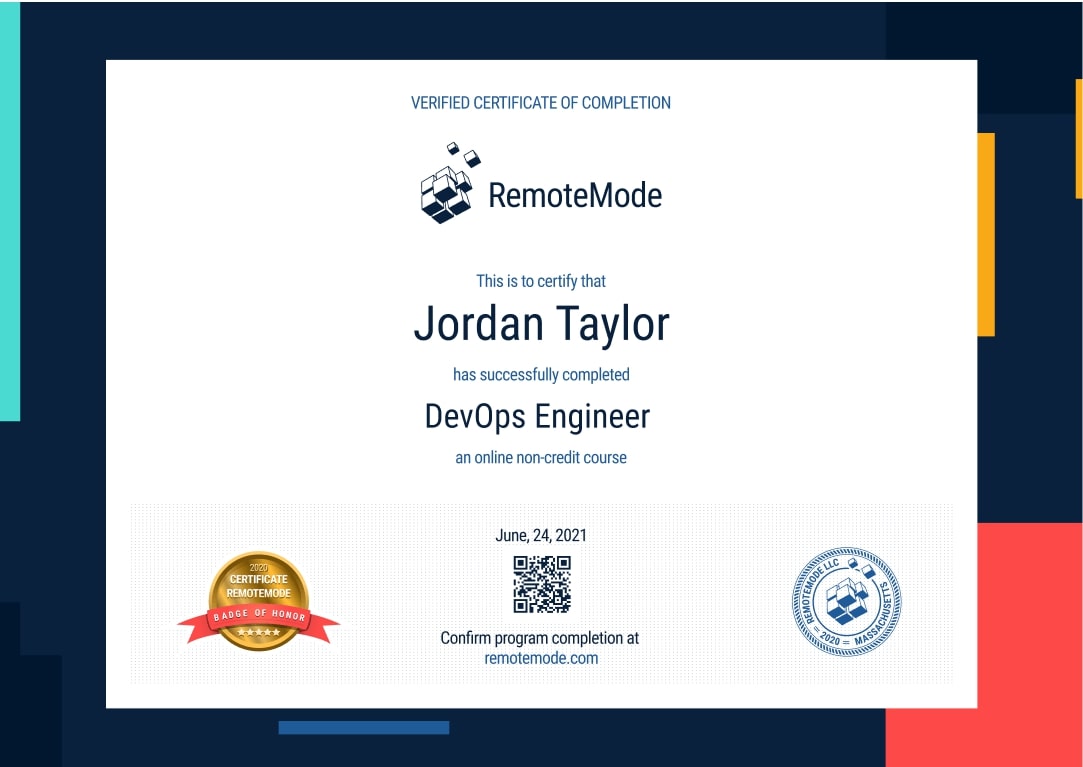Become a Help Desk Engineer
Help Desk Engineers provide comprehensive technical support for their company and the clients of their company. A Help Desk Engineer is someone who has an expansive knowledge of a wide range of different programs and applications. These specialists are responsible for maintaining a working knowledge of relevant programs and being able to communicate solutions to issues remotely.
It is essential to have Help Desk Engineers on call in nearly all businesses based in tech. Help Desk Engineers are critical for keeping businesses running smoothly and programs running continuously.
- 9-month long course
- 339 specialized lessons
- 6 hours per week
- 240 hours in total



Mission Forecast for Help Desk Engineers
Landing Zone
The main task of Help Desk Engineers is to organize technical help for non-IT computer users. Specificity allows them to work with the users in person or remotely utilizing video or phone. They are masters of troubleshooting and solve a wide range of problems, from simple questions about basic applications to complex errors affecting servers and networks. While some may work for large software companies or support service firms, others work in call centers. Today, over 844,600 Help Desk Engineers are employed. By 2030, that number will increase to almost 949,000 jobs.
Mission Objective (Who’s Hiring Right Now)
Help Desk Engineer Overview
The U.S. Bureau of Labor Statistics estimates that this profession will see an above-average increase in jobs - 9% in the next ten years.
- + 9-month long course
- + 6 hours a week - at your own pace
- + 339 on-demand lessons
- + 240 hours of learning materials
- + Receive a certification confirming your training
- + Participate in real-life Virtual Lab Projects
- Learn how to use and communicate your knowledge about technical systems.
- Write training manuals.
- Troubleshoot on the phone or in person.
- Walk customers through how to solve their technical issues.
- Setup, maintain and configure systems as needed.
Prepare for Liftoff
Microsoft Excel 2019. Data Analysis
This lesson details what Data Analysis is and stresses that it allows one to arrive at intelligent decisions through logical data analysis.
Part 1 of 4: Functions and Formulas
This lesson goes into the discussion of the important functions and formulas in Data Analysis functions found in Microsoft Excel 2019:
- AVERAGEIFS
- CONCATENATE
- COUNTA
- COUNTIFS
- DAYS/NETWORKDAYS
- IFERROR
- FIND/SEARCH
- LEFT/RIGHT
- LEN
- MAXIFS
- MINIFS
- RANK
- SUMIFS
- SUMPRODUCT
Part 2 of 4: Lookups and DataTables
This lesson discusses at length what Lookups and DataTables are and how these aid Project Managers solve data-related problems quickly and efficiently.
- Lookups
This segment discusses what the LOOKUP function is and how it gives Microsoft Excel 2019 users greater flexibility with data lookups.
The LOOKUP function is elaborated upon by looking at VLOOKUP used in additional calculations and finding a value across records as HLOOKUP renders the opposite search type through rows.
- DataTables
This segment defines what DataTables are and how a learner can create one in Microsoft Excel 2019. The discussion stresses that DataTables helps in keeping information organized through graphs and charts based on the information one provides.
This segment also discusses the advantages of using Microsoft Excel 2019's DataTables.
Part 3 of 4: PivotTables and PivotCharts
This lesson details Microsoft Excel 2019's PivotTables and PivotCharts functions and expounds on how these are powerful tools used for calculation, summing-up and analysis of data. The discussion also goes into the details of how these work differently based on the platform one chooses to use them through.
- PivotTable
This segment details how one can create and build-out a PivotTable.
- PivotChart
This segment discusses how the PivotChart is a better choice for users who are not inclined to quickly ascertaining the implications of numerical data that are summed-up in a PivotTable.
This part of the lesson introduces the PivotChart to learners who are partial to adding data visualizations to data. The discussion goes into detailing the steps in creating a PivotChart.
Part 4 of 4: Analytical Tools
This lesson discusses the Analytical tools available in Microsoft Excel 2019:
- z-Test
- t-Test
- Sampling
- Regression
- Rank and Percentile
- Random Number Generation
- Moving Average
- Histogram
- Fourier Analysis
- F-Test Two-Sample for Variances
- Exponential Smoothing
- Descriptive Statistics
- Covariance
- Correlation
- Anova
This lesson also goes into the contents of Analysis ToolPak and how each of these works.
Through the lesson, learners are made to understand that the user in charge of performing an analysis will be the one to provide the data and set the limitations for the analysis within Microsoft Excel 2019.
This lesson walks learners through the process of loading the Analysis ToolPak add-in program and accessing the tools within it.

Mission Control
- Stay focused with a mentor’s help and support
- Build a real portfolio with Virtual Lab Projects
- Compete with classmates in a virtual classroom
- Measure your progress with the Activity Tracking Log
- Make sure you get the job with resume help and interview assistance
In Collaboration with
Chart Your Trajectory
- CompTIA A+ Certification22 videos
- CompTIA NET+ Certification17 videos
- CompTIA Net+ Cert 007 Update19 videos
- Microsoft Outlook 201934 videos
- Microsoft Excel 201936 videos
- Microsoft Excel 2019. Data Analysis23 videos
- Microsoft Word 201942 videos
- Microsoft PowerPoint 201927 videos
- Microsoft Teams34 videos
Certificate of Completion
- Receive a certificate recognized by prevalent companies confirming your training
- Complete real projects in Virtual Labs
- Go at your own pace, learn your way
- Access course videos and materials 24 hours a day
- Take practical quizzes to keep you up to speed
- Classes created and mentored by industry leaders

Grow into a Help Desk Engineer
Support the industry in ways only you can. Learn how basic systems work on a specialized level to help streamline the tech industry into the next generation.
Program Forecast
- 9 months long, 6 hours per week
- 339 lessons in 240 hours
- Learn at your own pace
Virtual Lab
- Real Projects
- Create a working portfolio
- Receive expert feedback and mentoring
Career Services
- Interview preparation
- Resumé assistance
- Help with LinkedIn networking
Request More Information
View pricing and financing options